Tar Pit Escape
branding + UI
A competitive escape room experience for the La Brea Tar Pits.
3 weeks · UI designer, game designer · 2019

Abstract
Tar Pit Escape is an intergenerational and competitive escape room that explores Ice Age skeletons, provides educational information, and encourages players to learn more at the La Brea Tar Pits in Los Angeles, California, through a syncretic digital and physical experience. The escape room was developed under the guidance of Brett Renfer and Kim Gim of Bluecadet, and in collaboration with Brenna Nammo and Judy Ye.
Design Challenge
Pitch a brand new interactive concept to the Natural History Museum of Los Angeles County (NHMLA). Use digital media to expand the reach of the La Brea Tar Pits in Los Angeles beyond the museum walls, unlocking their rich collection and stories throughout greater LA and beyond.
Background
Museums are in a funny spot. Some are enjoying record attendance as visitors flock to show-stopping exhibitions. Yet, other institutions feel stuck: they haven’t quite figured out how to—or don’t care to—tap into these audiences, are trapped behind baggage of tradition, and so on. Still, all of them are competing for the same eyeballs... and new-comers such as pop-up experiences are elbowing in and, in some cases, eating their lunch. Many institutions have embraced digital media as a “way in” for audiences old and new, as a way to unlock and interpret their collections, or as a draw in and of itself. Some museums also see digital as a way to finally expand their collection, stories, and mission out into the larger world—and as such, a way to fundamentally change the perception and maybe even the defini- tion of “museum.” But what separates a meaningful, cultural experience from a strictly-for-the-likes Instagram museum?
Business Goals
-
Goal 1
Persuade the Greater LA area to visit the museum.
-
Goal 2
Expand the brand of the museum beyond the walls of the museum.
-
Goal 3
Apply findings and artifacts of the museum to interactive experience.
User Persona
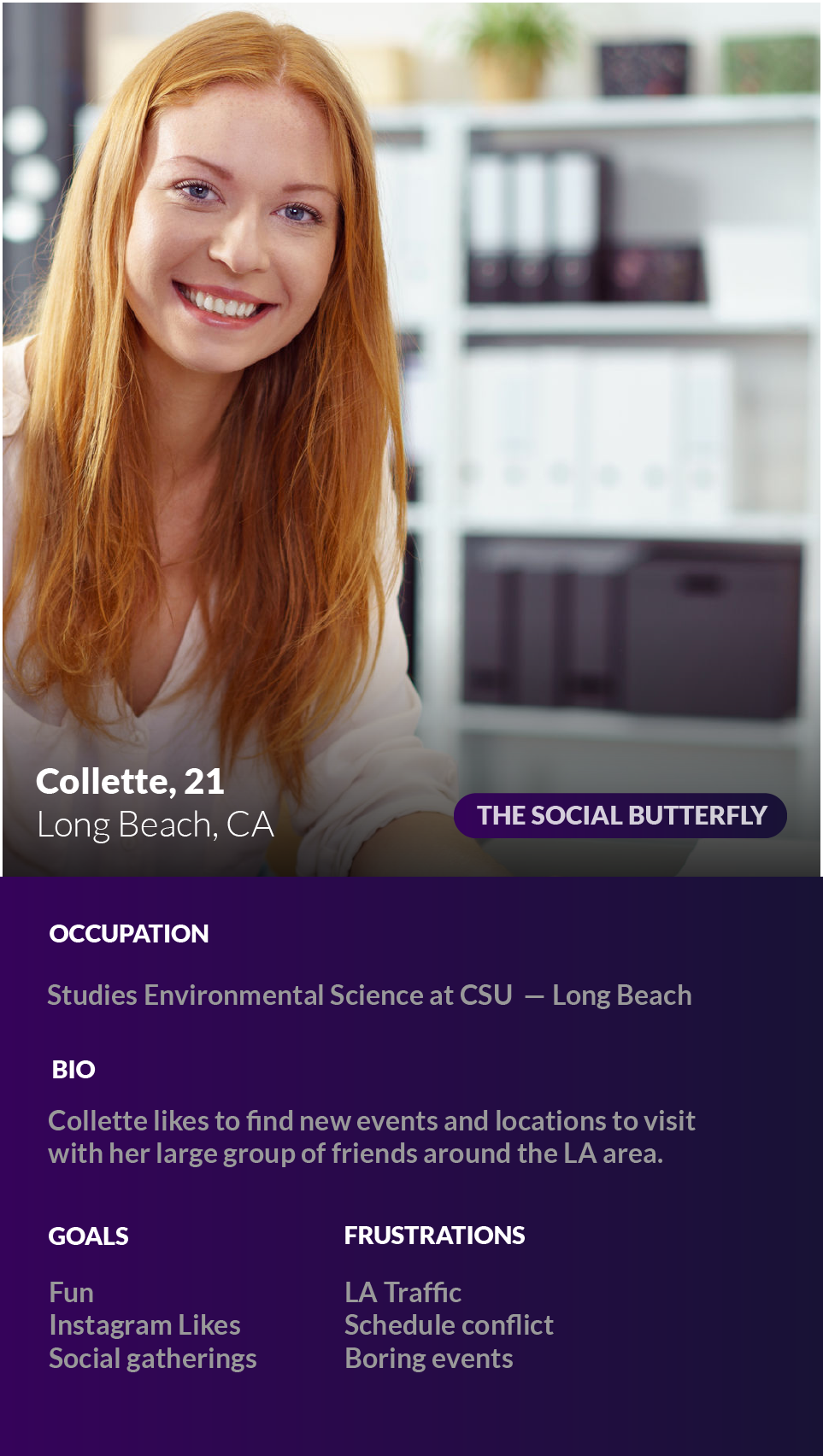
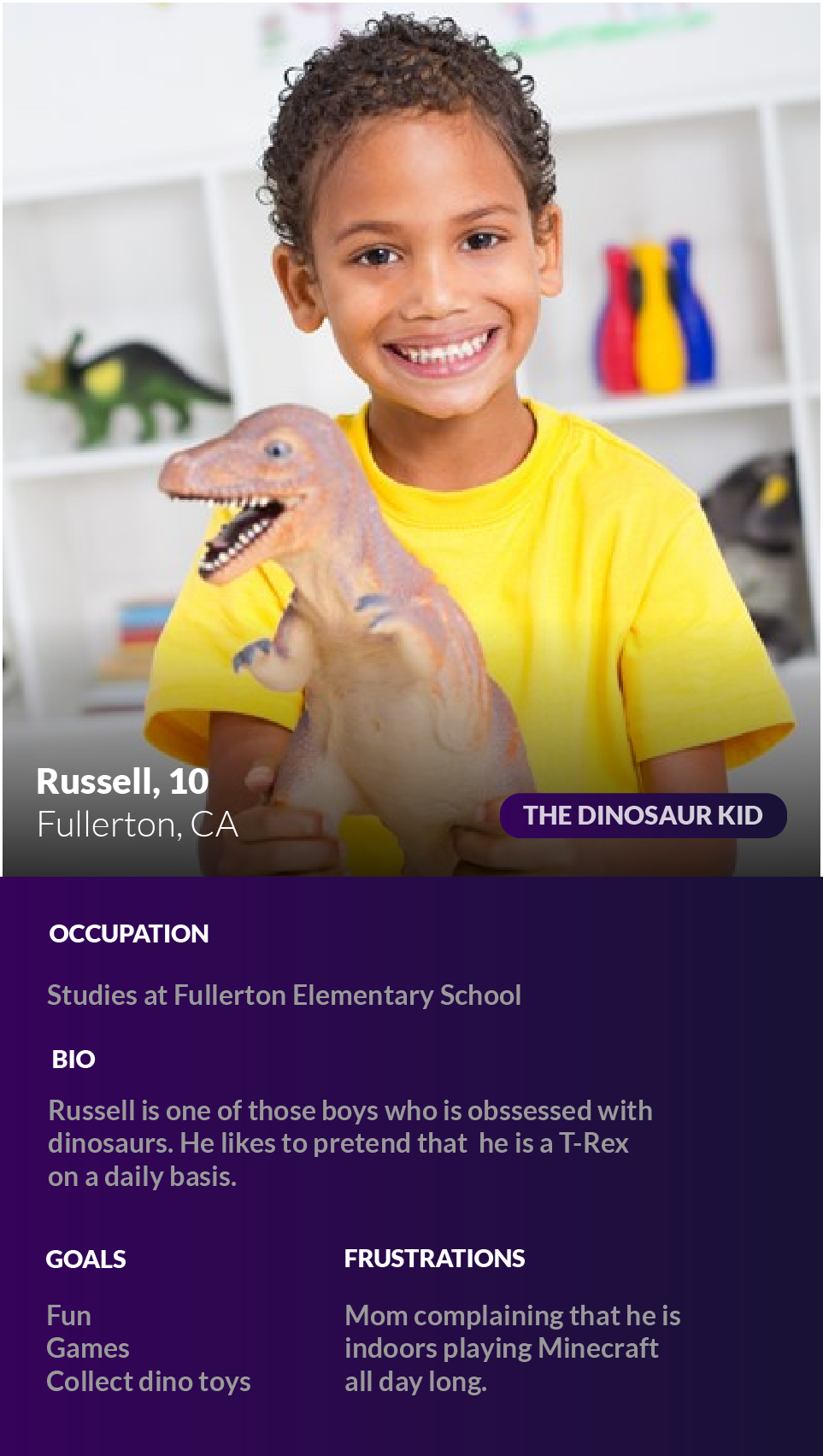
Bodystorming
One of the most efficient ways to put an experiential design to the test, is through simulated trials, also known as bodystorming. Bodystorming is a technique sometimes used in interaction design or as a creativity technique. The idea is to imagine what it would be like if the product existed, and act as though it exists, ideally in the place it would be used. For our experiment, we constructed a life sized field and walked through our design to note any flaws in the flow of our game.
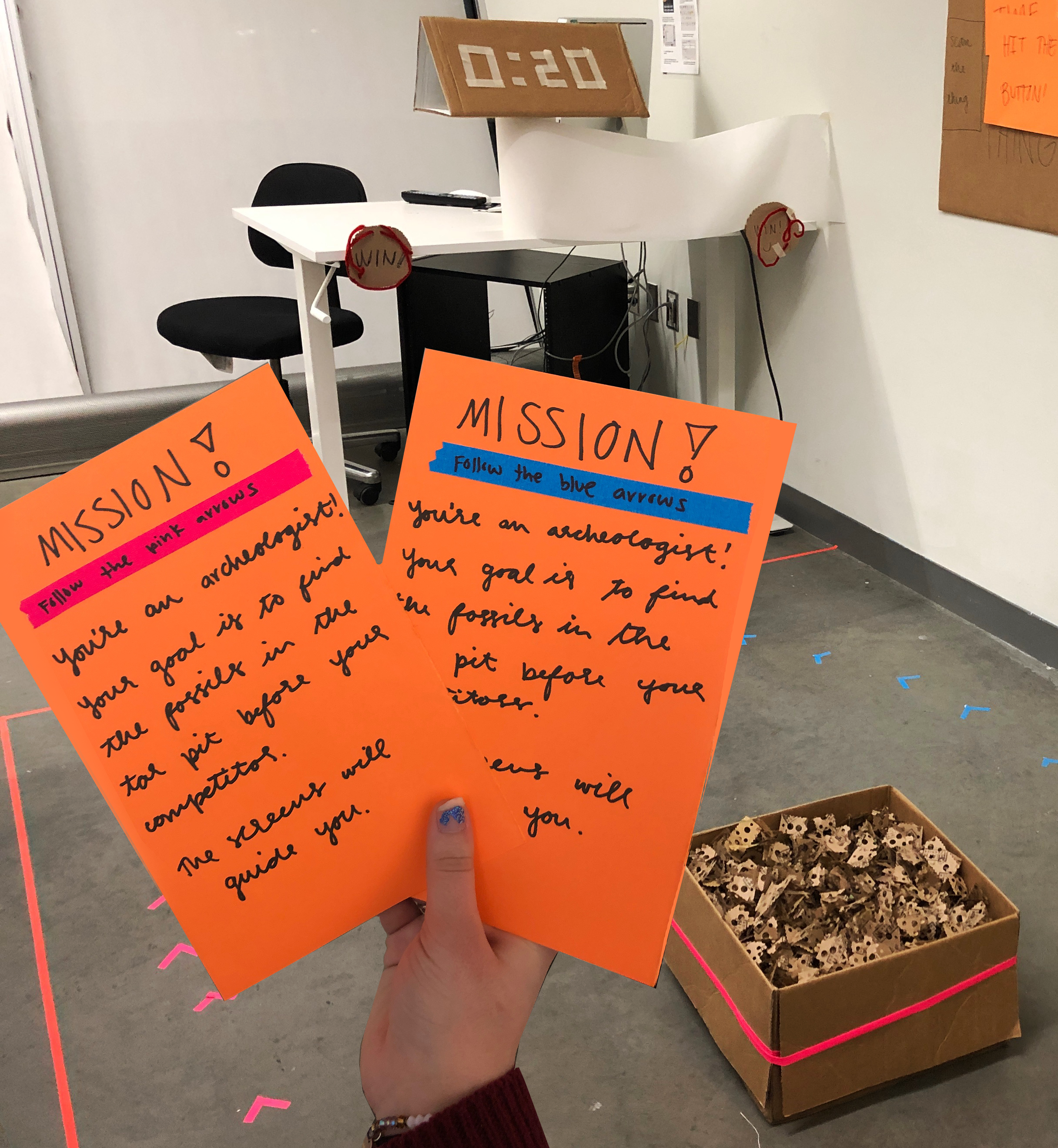
User Flow
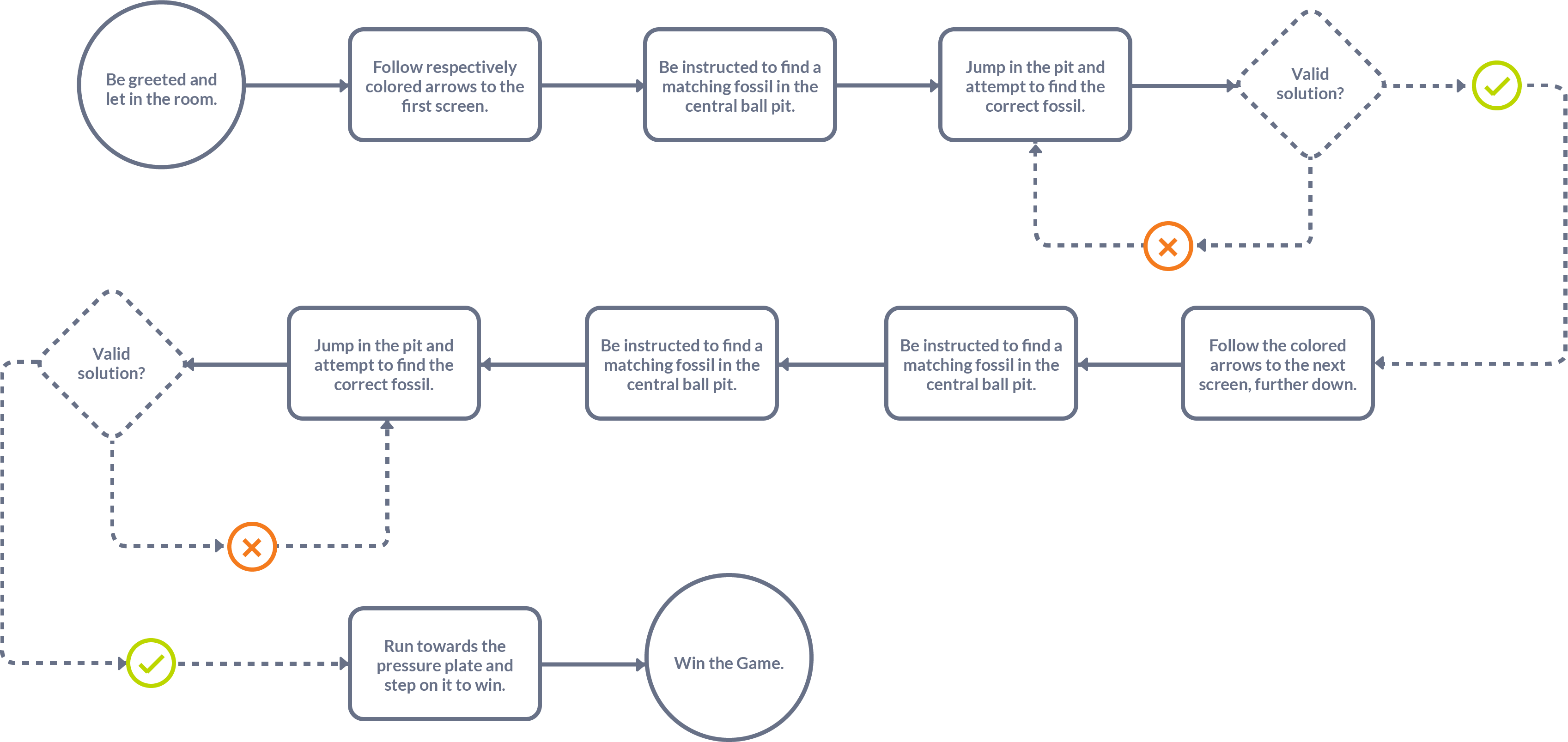
Question and Feedback Screens

Screen Flow
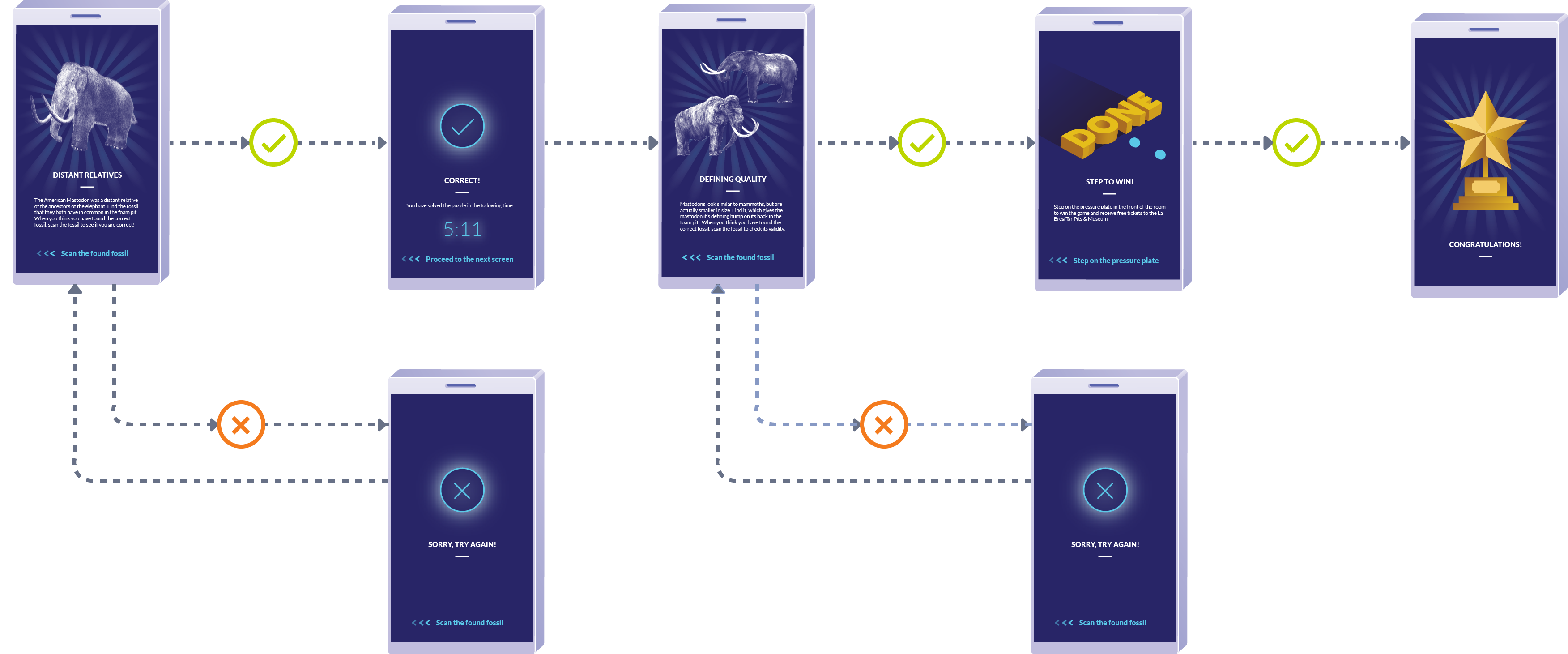
Mission Cards

Final Render of the Space

